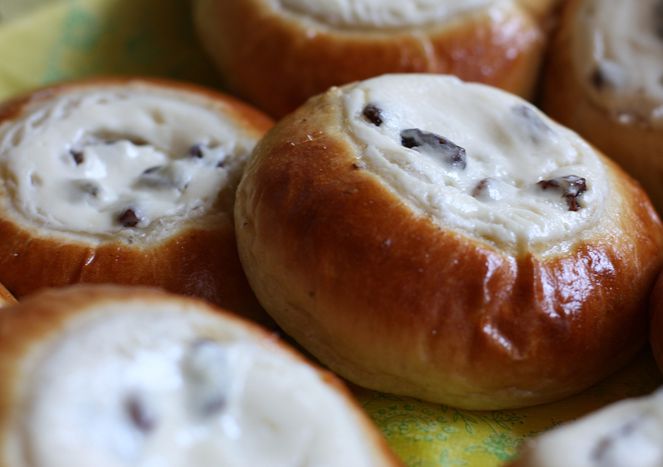
Hot-cross Europe
Published on
Translation by:
 cafebabel.com
cafebabel.com
Easter eggs, fried slices of bread in milk or wine and hot cross buns: April 8 sees Europeans celebrate Easter in their own way
Spain's Holy Week: Semana Santa
In Spain, Easter is the party of all parties. The Holy Week or 'Semana Santa' takes place from Palm Sunday, commemorating the death of Christ. On Easter Monday, everyone except Catalonians go back to work. This celebration is specially important in Aragon, Castilla and Andalusia, but not so much in the rest of the country. The tradition is most renowned in Seville, stretching back to the sixteenth century, when the Catholic church wanted to inspire passion in the people about Christ.
As in the past, it is still the religious brotherhoods who are responsible for organising the Easter processions. Every year, the week opens with the procession of 'pasos'. Brotherhoods usually dress in pentiential long robes and tall pointed hats, with a minority wearing chains on their feet. Lifelike wooden replicas of Bible scenes follow them through the southern Andalucian passages and wide avenues by candlelight, to the beat of a drum and with the incense hovering in the air around them.
England: Hot cross buns
In England, the Easter experience calls for a typically spicy-sweet bun to enjoy a traditional Good Friday breakfast. The cross on top of a hot cross bun symbolises Christ's crucifixion, and apparently brings luck to those who eat it. The story of this typical Easter snack began in pagan England, when they were served up as an offering to the goddess of spring. Apparently the Christian church tried to ban the delicacy, but its popularity ensured that the tradition stayed.
Germany: Easter rabbit
The bringer of luck to Germans during Easter is just as sweet as its English counterpart - but is somewhat more agile. Thanks to its proverbial capacity to procreate, the Easter rabbit and its famous eggs have become a symbol of fertility. The hope for new life is related to the resurrection of Christ. And it's not only a variety of multicoloured chocolate eggs that the Easter rabbit leaves; German children usually also enjoy other various sweets and little presents come Easter Monday.
Poland: 'migus-Dyngus'
There's a recreational angle to the Polish version of Easter too. After the forty days where you give something up for Lent, everyone enjoys 'Smigus-Dyngus' - a day on which you drench one another with water. This can be attributed to both Christinaity and the pagan tradition. When Poland underwent its religious transformation for example, young women were doused in water for the men: a symbolic purifying for the spring. Another legend speaks of the baptism of Prince Mieszko I on Easter Monday in 996, which brought Christinaity to the Poles.
Tired of huge family lunches, young Polish children turn to their buckets and water pistols to recreate real authentic water-fights. Bad luck for those who come out of church in their Sunday best - the children often be await them with water in hand.
Italy, the resurrection of 'casatiello' and 'pastiera'
In Naples and southern Italy there are two particular delicacies to be aware of at Easter time. Firstly, the pastiera a cake made out of ricotta, candied fruits, an orange tree flower and cooked wheat. Because it is very difficult to prepare, every well respected woman prepares at least a dozen to offer to friends and family. Then the gossip begins: who prepared the best 'pastiera' this Easter?
Another Easter delicacy is the casatiello. It is a salted brioche made out of flour, yeast, lard, eggs, salami and pecorino, sheep's milk cheese. The name derives from the Neapolitan word caso meaning 'cheese.' The pecorino is made by the milk drunk by the lamb, another symbol of Christ's ressurection. But the casatiello is so heavy once eaten, that in Naples it has become synonymous with a lazy person.
First published on 4 April 2007 on cafebabel.com
Photos: Hot cross buns (Fabifarm/ Wikipedia), German Osterhase (essie82/ StockXchange), Smygus Dingus in Poland (Marzena Lesinska)
Translated from Ostern in Europa: Unheilige Wasserspritzer


